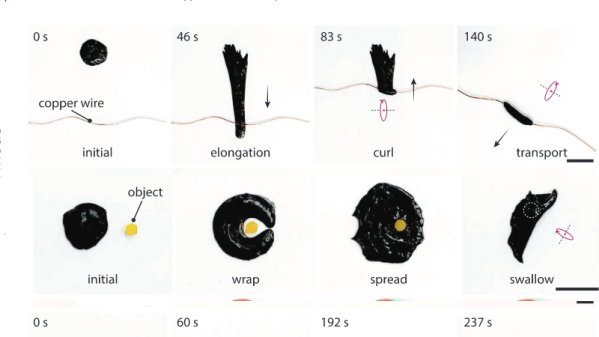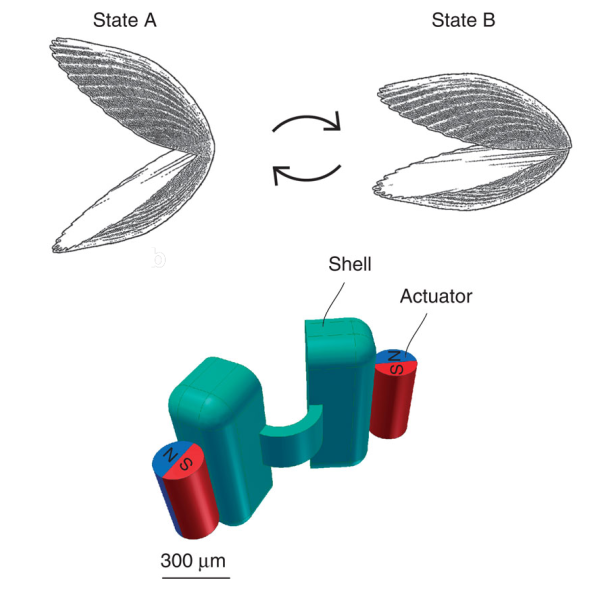[Li Zhang] and his colleagues at the Chinese University of Hong Kong (CUHK) have developed a blob of goo that can navigate complex surroundings, grow an ‘arm’, grasp a wire and move it, encapsulate a small object and carry it. As explained in the research paper, the secret is in the non-Newtonian material the bots are made of.
You can make a similar concoction at home, usually called “slime”, with corn starch and water. Deformed slowly, it will move like a fluid. Deformed rapidly, it behaves like an elastic solid. CUHK’s version is polyvinyl alcohol, glass coated NdFeB microparticles (neodymium magnets), and borax.
This dual behavior lets the robot do amazing things. Placed on a surface, they made the blob extend pseudopods by dragging underneath with a magnet, then used a circular field to make it grasp and transport a wire. They used a similar technique in the other axis to swallow an object. The CUHK group are promoting this as a way to retrieve foreign objects in the body (like an accidentally swallowed button cell).

Nd magnets are made by sintering Nd2O3 or NdFeB in a strong magnetic field. Nd2O3 is available from SigmaAldrich at only slightly eye watering prices. Polyvinyl alcohol and borax are easily available. This seems like a hobbyist do-able project (Nd is toxic, use precautions).
We’ve been covering micro robots for some time. Back in 2014 we covered swarm micro robots. This project uses an external field to move a small Nd magnet, and all the way back in 2014 we covered early work in this field.
















